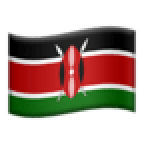Amid a shifting global economic landscape, several African nations are demonstrating significant financial resilience through the strength and stability of their currencies.
As of July 2025, these countries, lifted by strategic economic policies, rich natural resources, and expanding international trade, stand out for the value of their legal tender.
This analysis provides a clear perspective on the continent's strongest currencies, examining the factors that reinforce their standing.
&format=jpeg)
A person holding money
Strongest currencies in Africa
North African countries feature prominently in the continent's currency rankings.
Their strategic trade links, especially with Europe, and substantial endowments of natural resources are pivotal to their monetary strength.
1. Tunisian Dinar (TND)
The Tunisian Dinar has long maintained its position as one of Africa's most valuable currencies.
This stability is largely underwritten by Tunisia's diverse, export-driven economy, which includes thriving textile, agricultural, and phosphate industries.
&format=jpeg)
Tunisian Dinar
The nation's cautious monetary policies and stringent controls on currency speculation have also been crucial in safeguarding its value.
As of July 2025, the exchange rates are approximately:
$1 USD = 3.12 TND
1 TND = 41.35 SH
&format=jpeg)
Tunisian Dinar
2. Libyan Dinar (LYD)
Underpinned by the largest proven crude oil reserves on the continent, the Libyan Dinar has historically been one of Africa's strongest currencies.
While the nation has faced significant political and economic challenges, the dinar's value remains a direct reflection of Libya's critical role in the global energy market.
As of July 2025, the exchange rates are approximately:
$1 USD = 4.81 LYD
1 LYD = 26.82 SH
3. Moroccan Dirham (MAD)
The Moroccan Dirham benefits from a well-diversified economy that includes robust tourism, agriculture, and manufacturing sectors.
The kingdom's consistent economic growth and its success in attracting foreign investment are significant contributors to the dirham's stability.
As of July 2025, the exchange rates are approximately:
$1 USD = 9.97 MAD
1 MAD = 12.94 SH
&format=jpeg)
Moroccan Dirham
Rest of the Continent
Beyond North Africa, other nations are demonstrating impressive economic fortitude, which is mirrored in the strength of their currencies.
4. Ghanaian Cedi (GHS)
In West Africa, the Ghanaian Cedi has shown notable resilience. This can be attributed to the nation's status as a top producer of cocoa and gold, complemented by a dynamic and growing services sector.
Renewed efforts to enforce fiscal discipline and manage inflation have also been instrumental in the cedi's recent performance.
As of July 2025, the exchange rates are approximately:
$1 USD = 14.95 GHS
1 GHS = 8.63 SH
READ ALSO: Kenyan money laws you might be breaking every day without realising
5. Botswana Pula (BWP)
The Botswana Pula has long been a symbol of stability in Southern Africa.
For decades, Botswana's prudent and transparent management of its diamond revenues, combined with a steadfast commitment to democracy and good governance, has cultivated a stable and predictable economic environment.
The pula's strength is a direct result of the nation's long-term strategic vision and sound fiscal management.
As of July 2025, the exchange rates are approximately:
$1 USD = 13.78 BWP
1 BWP = 9.36 SH
&format=jpeg)
Botswana Pula
READ ALSO: Meet Botswana's new Youth Minister, 24-year-old Lesego Chombo
6. Seychellois Rupee (SCR)
Representing one of Africa's smallest nations, the Seychellois Rupee consistently demonstrates remarkable strength.
The primary driver of the rupee's value is the archipelago's thriving, high-end tourism industry, which attracts visitors and foreign currency from around the world.
As of July 2025, the exchange rates are approximately:
$1 USD = 13.51 SCR
1 SCR = 9.55 SH
&format=jpeg)
Seychellois Rupee
READ ALSO: How Kenya edged out Ethiopia to reclaim East Africa's top economy
What Makes a Nation's Currency Strong?
A nation's currency strength is a direct reflection of its economic health, political stability, and the policies enacted by its government.
A strong currency, which has high purchasing power against others, is not a matter of chance but the result of several key interconnected factors.
At its core, a robust economy is fundamental. Low inflation is crucial, as it preserves the currency's domestic purchasing power and makes it attractive to foreign investors.
Strong economic growth, measured by GDP, signals investment opportunities, drawing in foreign capital and increasing demand for the currency.
Furthermore, a positive balance of trade, where a country exports more than it imports, creates a natural demand for its currency from foreign buyers.
![[FILE] Central Bank of Kenya (CBK) governor Patrick Njoroge displays some of the new designs for the Kenyan currency notes in 2019.](https://image.api.sportal365.com/process/smp-images-production/pulselive.co.ke/29072024/284fe451-6eb8-4ec0-af26-43dd938d17ef?operations=fit(240:135)&format=jpeg)
[FILE] Central Bank of Kenya (CBK) governor Patrick Njoroge displays some of the new designs for the Kenyan currency notes in 2019.
Government and central bank actions are equally pivotal. Higher interest rates attract "hot money" from global investors seeking better returns, boosting the currency's value.
READ ALSO: Why Kenyan traders no longer need the US dollar to do business across Africa
Prudent fiscal policy, characterised by manageable government debt and stable budgets, fosters confidence. Large foreign exchange reserves also signal strength, as they allow a central bank to defend its currency against speculation or sudden shocks.
Finally, stability and sentiment provide the foundation for trust. A country with a stable political system, strong rule of law, and low geopolitical risk is seen as a safe haven for investment.
This confidence, combined with positive market sentiment, encourages long-term capital inflows and supports a strong, stable currency.
Ultimately, these elements work in concert, creating a virtuous cycle that reinforces a currency's power on the world stage.


&format=jpeg)
)
&format=jpeg)
&format=jpeg)
&format=jpeg)